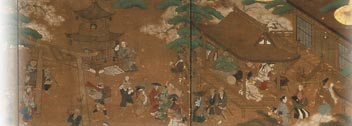Lectures by Hanna Scolnicov
Outline
| date | September 29, 2010 (Wednesday), 15:00–17:00 October 2, 2010 (Saturday), 15:00–17:00 |
|---|---|
| Venue | Classroom 321–1, Building 32, Toyama Campus Classroom 302, Building 26, Waseda Campus |
| Organizer | Western Theatre Research Course |
| outline | The Theatre Museum’s Global COE Shakespeare Seminar has hitherto held lectures by renowned Shakespeare researchers from Japan and abroad with a primary focus on the interrelation between performance, on the one hand, and text and culture, on the other. Ms. Scolnicov, who was invited to lecture this time, is highly acclaimed not only for her in-depth studies of Shakespearean texts and culture but also for her extremely wide-ranging research into Shakespeare and painting as well as the relation between Shakespeare and modern and contemporary playwrights. She also serves as a member of the International Shakespeare Association. The present article provides summaries of the two lectures she gave. |
Details
“Chekhov’s Reading of Hamlet in The Seagull”Chekhov’s naturalist play, The Seagull, is a response to Hamlet. Since Chekhov wrote The Seagull using Hamlet as source material, there are many similarities between these two plays. Like Hamlet, the young playwright, Treplyov, is tormented by the fact that his mother is in love with a man who is not his father, and he too is rebuffed by the woman he loves. Likewise, the device of a play within a play is effectively used. Treplyov’s play, which is performed in Act 1 of The Seagull, i.e. the play within the play, like the play within the play in Hamlet, is related to the framework of the play as a whole. Before the play within the play begins, Treplyov’s mother quotes Gertrude’s lines from the bedroom scene, Act 3, Scene 4 of Hamlet, and Treplyov replies quoting Hamlet’s lines. The speeches cited here are rhetorically and emotionally charged and confer a special intensity to the surface of Chekhov’s naturalistic drama. The exchanges between these two pairs of mothers and sons in the two texts, Hamlet and The Seagull, from the 16th and 19th centuries, act in concert with one another allowing us to detect their intertextuality. In addition, Nina’s allusion to the moon in the play-within-a-play scene is suggestive of the play within a play in Midsummer Night’s Dream, allowing a contrast and comparison to be made between the amateur and professional actors in Chekhov and Shakespeare’s “mechanicals”. A consideration of the play within the play in The Seagull thus makes clear the issues of the plays within plays in Shakespearean drama.
“The Plays within the Play in Hamlet”
Although the play-within-a-play scene in Act 3, Scene 2 of Hamlet is often partially abbreviated in performances today in order to save time, it is important. It is performed with the aim of allowing Hamlet to confirm that Claudius is his father’s murderer. Since the dumb show put on at the beginning – what C.J. Sisson has called a flashback of the murder scene – is performed without any words and by the use of gesture alone, the gist of it is difficult to convey to an audience. Because the play within a play that follows is performed using rhetorical language and its contents are easy to get across to the audience, even Claudius, who may not have been able to understand what the dumb show was all about, is able to get the play’s message – not to mention Hamlet’s intention in having it performed – and leaves without waiting for the end. This is the moment of “recognition” that Aristotle speaks of in his Poetics. In short, Hamlet “recognizes” that Claudius is the murderer, and Claudius “recognizes” that Hamlet knows he is the murderer; that “recognition” is shared. After this, what Aristotle calls a “reversal” occurs: as Claudius tries to eliminate the threat that Hamlet poses, Hamlet starts planning his revenge, and the story rushes to its tragic conclusion. Thus the play-within-the-play scene is the point at which the “recognition” and “reversal” arise; it is the turning point of the play as a whole. In this structure we can catch sight of Shakespeare’s experimentation and originality.


